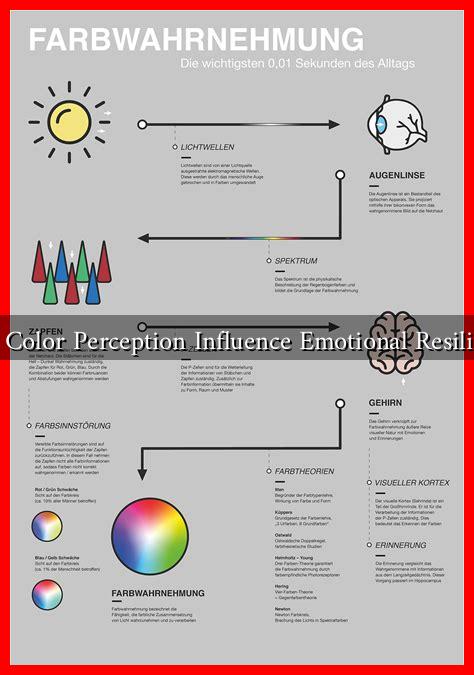-
Table of Contents
Can Color Perception Influence Emotional Resilience?
Color perception is a fascinating aspect of human psychology that extends beyond mere aesthetics. It plays a significant role in how we experience and interpret our emotions. Recent studies suggest that color can influence emotional resilience—the ability to adapt to stress and adversity. This article explores the connection between color perception and emotional resilience, examining how different colors can evoke specific emotional responses and potentially enhance our ability to cope with challenges.
The Psychology of Color
Color psychology is the study of how colors affect human behavior and emotions. Different colors can evoke various feelings and reactions, which can be harnessed to improve emotional well-being. Here are some common associations:
- Red: Often associated with passion, energy, and urgency, red can stimulate feelings of excitement but may also lead to stress if overused.
- Blue: Known for its calming effects, blue can promote feelings of tranquility and stability, making it beneficial for emotional resilience.
- Yellow: This bright color is linked to happiness and optimism, potentially boosting mood and encouraging a positive outlook.
- Green: Symbolizing nature and growth, green can evoke feelings of balance and harmony, which are essential for resilience.
- Purple: Often associated with creativity and spirituality, purple can inspire introspection and emotional depth.
Color and Emotional Resilience
Emotional resilience is crucial for navigating life’s challenges. It involves the ability to bounce back from setbacks and maintain a positive outlook. Research indicates that color perception can play a role in enhancing this resilience. Here are some ways color can influence emotional resilience:
- Environmental Influence: The colors in our surroundings can significantly impact our mood and stress levels. For instance, a workspace painted in calming blues and greens may help reduce anxiety and promote focus, thereby enhancing resilience.
- Color Therapy: Also known as chromotherapy, this alternative treatment uses colors to promote healing and emotional balance. Practitioners believe that exposure to specific colors can help individuals process emotions and build resilience.
- Personal Associations: Individual experiences with colors can shape emotional responses. For example, someone who associates the color yellow with joyful childhood memories may find it uplifting during tough times.
Case Studies and Research Findings
Several studies have explored the relationship between color perception and emotional resilience. One notable study published in the journal *Frontiers in Psychology* found that participants exposed to warm colors (like red and orange) reported higher levels of anxiety compared to those exposed to cooler colors (like blue and green). This suggests that color can influence emotional states, which in turn affects resilience.
Another research project conducted by the University of British Columbia examined how color affects cognitive performance and emotional well-being. The findings indicated that individuals working in environments with blue hues performed better on tasks requiring focus and reported lower stress levels, highlighting the potential of color to enhance emotional resilience.
Practical Applications
Understanding the influence of color on emotional resilience can have practical applications in various settings:
- Workspaces: Employers can create environments that promote emotional well-being by incorporating calming colors into office designs.
- Therapeutic Settings: Mental health professionals can use color therapy techniques to help clients process emotions and build resilience.
- Personal Spaces: Individuals can curate their living spaces with colors that evoke positive emotions, enhancing their overall emotional health.
Conclusion
Color perception is more than just a visual experience; it can significantly influence our emotional resilience. By understanding the psychological effects of different colors, we can create environments that foster emotional well-being and resilience. Whether through workplace design, therapeutic practices, or personal choices, harnessing the power of color can help individuals navigate life’s challenges more effectively. As we continue to explore the intricate relationship between color and emotion, it becomes clear that our surroundings can play a pivotal role in shaping our mental health and resilience.
For further reading on the psychology of color, you can visit Color Psychology.

